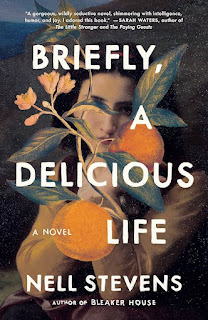Week 14 Response
I understand part of the argument to separate LGBTQ and Urban fiction from the general collection, at least from a certain patron perspective. An opinion piece on the blog Truly Booked noted that by blending books with queer narratives into the regular collection instead of giving them their own space, the queer books get buried underneath the mountain of straight fiction that has historically had, and continues to have, a bigger and brighter spotlight on it. There’s the chance in finding a gay needle in a straight haystack, but there’s a lot of digging involved. This blogger argued that because of the divide in quantity, it’s doing LGBTQ books a disservice to be grouped in with the general collection.
That being said, there’s a variety of different issues and points-of-view to take into consideration for this issue. A big part of the library is formulating new ideas and capturing new information. In order to allow patrons to do this, librarians need to set up a space of discovery, this often-discussed and always-coveted serendipitous discovery. And despite having specific shared themes that could be separated into subcategories, LGBTQ and Urban fiction are not so different from pre-existing general genres that they need to be separated into their own genres. Fiction that is written by and for minority groups is still fiction. The Song of Achilles is historical fiction Red, White, & Royal Blue is romance, Push is a coming-of-age YA story. LGBTQ and Urban fiction have themes that group them, respectively, together, but so do all sorts of subgenres. It doesn’t mean they need to break from the pack entirely. Placing these books into the general collection means that someone who may not seek out queer and urban fiction may easily pick out something new. We don’t separate out and shelf historical fiction by which period of history it explores, so why would we break up romance novels because the couple featured or the background of the story doesn’t look exactly the same?
Furthermore, because LGBTQ fiction and urban fictions are not proper genres in their own right, it makes it more difficult to deduce what books should fit into these categories. Is a book Urban fiction simply because it takes place in a city and explores the socio-economic issues related to urban living? Then what about James Joyce’s Ulysses or There’s an assumption that these are new genres, that we are only just seeing queer authors and authors of color writing about their experiences. But what about our classics? Will we reshelf Ralph Ellison’s Invisible Man or Virginia Woolf’s Orlando? Putting works of LGBTQ and Urban fiction into their own categories could be fine, but how are we deciding what books are, for example, queer books are and what they aren’t? Brit Bennett’s The Vanishing Half features a supporting character who is a trans man seeking top surgery. Does that make the book queer enough to fall into the LGBTQ category? Third book in Naomi Novik’s Scholomance series features a sapphic relationship between the main and secondary characters, so should we recategorize that as well? It’s nitpicky and a little obsessive.
In addition, placing books that are specifically by and for minority authors into their own genres supposes a lot about our audience. If we have romance and then queer romance, fiction and then urban fiction, we are sending the message that the default is to be straight and white. Here are our stories about history, drama, adventure, and here are our stories about “other-perspectives.” How does it feel then to our patrons who fit in those marginalized groups to have to go to their own separate categories to find books that echo their own experiences? To have a whole collection for straight and white folks, and an end cap display for people like you? To incorporate different perspectives into the same genre is acknowledging that there are, in fact, different perspectives present in our own communities.
Of course, there is value in having a sort of “safe space,” like what the author of the Truly Booked blog was discussing, to have all the books in a certain section reflecting folks’ often-hidden lived experiences. Perhaps a compromise towards that would be to have displays highlighting works by Urban fiction and LGBT authors, which both lends itself to extra eyes and promotes more diverse collections with a variety of different perspectives.
Sources:
https://www.libraryjournal.com/story/serendipitous-discovery-is-it-getting-harder-from-the-bell-tower
https://newsblog.drexel.edu/2013/04/12/how-urban-fiction-is-helping-to-bring-readers-back-to-the-library/
https://trulybooked.com/2017/06/28/defense-queer-sections-book-stores/

Very well said - the thought of re-shelving classics suddenly makes the task even more daunting. Well thought out response. Great work!
ReplyDelete